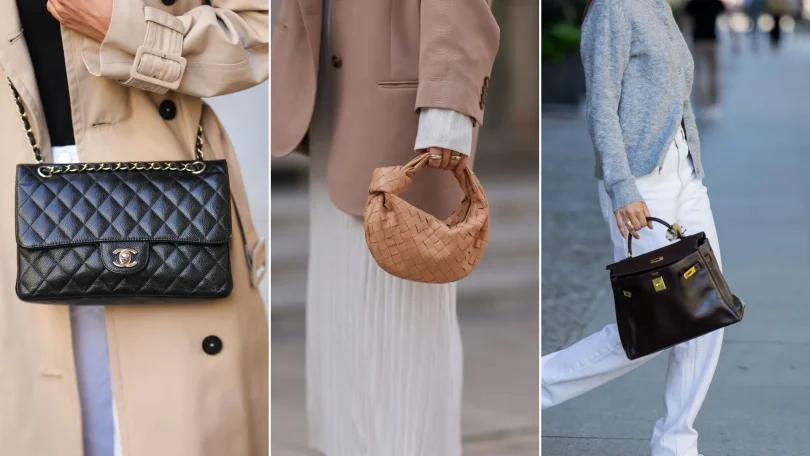The fashion industry loves to push the “investment piece” narrative, but when it comes to designer leather handbags, this isn’t just marketing speak. Walk into any luxury consignment store, and you’ll see forty-year-old Hermès bags selling for more than their original retail price. Meanwhile, that trendy bag from last season? Probably forgotten in the back of a closet somewhere.
The reality is stark: most accessories follow a predictable cycle of hype, saturation, and eventual disposal. Designer leather handbags break this pattern entirely. But why exactly should anyone part with substantial money for what is essentially a container to carry things?
Leather That Actually Gets Better With Time
Mass-market handbags use leather that’s been extremely processed, from corrections to paint, and treated until it barely resembles the original hide. Designer houses work differently, as they source hides from specific regions (one of the most renowned is Italy, famous for superior quality), then employ local craftsmen who’ve spent decades perfecting techniques that date back generations.
This isn’t romantic nonsense about “old world craftsmanship.” It’s practical. The leather used in high-end bags develops character over time rather than simply wearing out. Scratches and scuffs become part of the bag’s story, rather than signs that it needs replacing. The patina that develops is impossible to manufacture industrially and gives each piece a unique personality.
Italian leather workers still hand-stitch seams because machine stitching creates weak points that fail under stress. Artisans spend hours on edge painting because properly sealed edges prevent water damage and cracking. These aren’t luxury details; they’re engineering solutions.
The Economics Make Sense (Eventually)
It’s true that designer leather handbags come at a price. Certain models have become legitimate alternative investments, especially those that are part of vintage collections.
But even bags that don’t reach collectable status hold their value remarkably well: in any authenticated resale platform, designer pieces sell for 60-80% of retail price years after purchase. Impossible numbers for fast fashion accessories.
The key lies in selectivity. Not every designer bag qualifies as an investment. Seasonal styles and logo-heavy pieces date quickly. The smart money goes toward classic silhouettes from established houses—bags that looked elegant twenty years ago and will still look elegant twenty years from now.
Design That Transcends Decades
The secret to the timeless elegance of designer leather handbags lies in simplicity: as Chanel said, “less is more”. Details are extremely important: perfecting fundamental elements like the weight distribution of a handle, the angle of a flap, and the placement of interior pockets truly sets apart a designer piece from a mass-produced one.
Using lambskin for the lining instead of pig skins (heavier and with those “particular” dots that do not fade away), that is thru luxury.
This design philosophy creates bags that complement rather than dominate an outfit. A well-chosen designer bag enhances personal style without announcing itself aggressively. It becomes the kind of accessory that people notice subconsciously. That’s why it’s an investment that withstands the passage of time.
Conclusion
The decision to buy a designer leather handbag often marks a shift in purchasing philosophy. Instead of accumulating multiple cheaper options, it means choosing fewer, better things. It’s selecting the perfect bag for your own style, a piece that will accompany you for decades.







